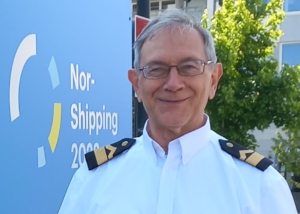Ocean under the supervision of microsatellites. Kongsberg will build satellites

 By Marek Grzybowski
By Marek Grzybowski
Kongsberg Defense & Aerospace has received a contract from the Norwegian Intelligence Service (NIS) to provide maritime satellite surveillance data from Norwegian waters located in the zone necessary for Norway’s security. NIS is responsible for space operations and the safe development of the Norwegian Armed Forces. The data will be used by the Norwegian Armed Forces. But not only. The data obtained through Kongsberg’s operators and devices will also be used by other Norwegian government institutions involved in maritime safety.
The Coastal Administration, the Directorate of Fisheries and the Norwegian Customs Service will have access to the information collected by the operator. The contract covers four years of providing information services obtained from satellites. The contract will start in 2025. This year the satellites will be launched and ready for operation. The value of the contract was not disclosed.
The three satellites will be manufactured by Kongsberg NanoAvionics and equipped with Automatic Identification System (AIS) receivers and detector systems provided by Kongsberg Discovery. The satellites will be owned and operated by Kongsberg Satellite Services (KSAT). KSAT will utilize its international network of receiving stations. The stations will transmit high-frequency monitoring data sets. The company announces that they will be transferred with a very slight delay.

Kongsberg will build microsatellites
– We are proud to offer this service to the Norwegian government, as well as future international partners and customers. The provision of maritime satellite data will expand Kongsberg’s entire offering in the company’s maritime value chain, said Eirik Lie, president of Kongsberg Defense & Aerospace.
He emphasized the use of the synergy effect resulting from the cooperation of the Norwegian company’s department, emphasizing that “Thanks to the internal connection of the potentials of subsidiaries, Kongsberg completes the entire value chain, offering next-generation satellite services, from the provision of our own microsatellites and ground stations to market-leading processing systems data and their analytics.
“These three satellites will significantly increase maritime surveillance capabilities in our areas of interest, improve situational awareness in government institutions and strengthen maritime security in the High North,” said Vice Admiral Nils Andreas Stensønes, Director of the Norwegian Intelligence Service.
Norway has something to protect. Its coastline is over 25,000 km long. km. It has a 200-mile Fisheries Protection Zone and a non-overlapping Exclusive Economic Zone extending north from the coast of Norway. The economic zone has extensive oil and gas deposits, as well as wind farms and fish farms.
And it must be emphasized that the Norwegian fleet is the fourth national fleet in the world in terms of value. The Norwegian-controlled merchant shipping fleet has seen steady growth in both tonnage and number of ships. Between 2020 and 2022, the number of ships decreased from approximately 1,800 to almost 1,600 units. In terms of tonnage, in 2022 the fleet increased moderately to 19 million GT. There are 900 units with a tonnage of over 2 million GT flying under the Norwegian flag. However, in the convenient Norwegian International Ship (NIS) Register, there are over 690 ships with a tonnage close to 17 million GT, according to the Norwegian statistical office Statistics Seantralbyra.
Space and surveillance in one
The Space & Surveillance Department employs 667 people. In 2023, it achieved sales of NOK 1,052 million. This division produces a wide range of space and maritime surveillance equipment, systems and services that are used in over 40 countries. Kongsberg is a leading supplier of ground stations for collecting and processing satellite data. This company’s stations operate in many countries around the world.
In its portfolio, the Norwegian company has many of its own designs and equipment for on-board satellite electronics. The equipment produced in the Space & Surveillance department is installed on over 200 satellites. The portfolio includes equipment and components for satellites for communication, navigation and Earth observation, as well as space probes for space exploration.
Kongsberg Space & Surveillance is the largest supplier of space equipment to ESA in Scandinavia and a leading supplier of equipment for scientific satellites, Earth observation satellites and launch vehicles. Kongsberg provides a range of solutions for ship traffic surveillance, marine energy and maritime security. At Kongsberg NanoAvionics (a subsidiary of KONGSBERG), small satellites are designed and manufactured.
The series of satellites, called N3X, is the first of the satellite projects Kongsberg plans to build and operate. The project assumes their optimization in such a way that will ensure that users obtain the best possible data sets. Satellites will have excess potential, which will allow their capabilities to be made available to international users.
However, the basic information sets will be obtained in Norwegian sea areas that are areas of interest, which will be available to the Norwegian intelligence services, military and administration. Both the Norwegian government and international customers will benefit from the satellite information. There is therefore a chance for Poland to also benefit from the Norwegian satellite system. Or maybe it will even buy satellites and introduce them to the protection system of the Polish economic zone, sea ports and MEW installations?
